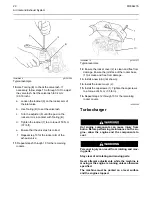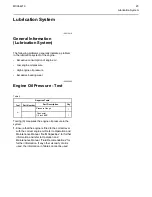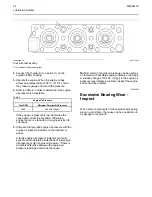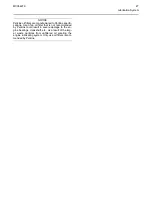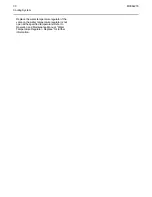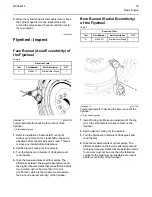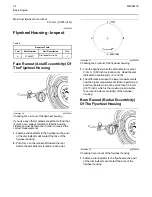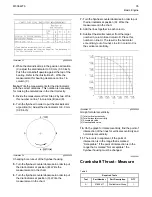
NOTICE
Keep all parts clean from contaminants.
Contaminants may cause rapid wear and shortened
component life.
NOTICE
Care must be taken to ensure that fluids are con-
tained during performance of inspection, mainte-
nance, testing, adjusting and repair of the product.
Be prepared to collect the fluid with suitable contain-
ers before opening any compartment or disassem-
bling any component containing fluids.
Dispose of all fluids according to local regulations
and mandates.
Before you begin inspection of the turbocharger, be
sure that the inlet air restriction is within the
specifications for your engine. Be sure that the
exhaust system restriction is within the specifications
for your engine. Refer to Systems Operation, Testing
and Adjusting, “Air Inlet and Exhaust System -
Inspect”.
The condition of the turbocharger will have definite
effects on engine performance. Use the following
inspections and procedures to determine the
condition of the turbocharger.
• Inspection of the Compressor and the Compressor
Housing
• Inspection of the Turbine Wheel and the Turbine
Housing
Inspection of the Compressor and
the Compressor Housing
Remove air piping from the compressor inlet.
1.
Inspect the compressor wheel for damage from a
foreign object. If there is damage, determine the
source of the foreign object. As required, clean the
inlet system and repair the intake system. Replace
the turbocharger. If there is no damage, go to Step
3.
2.
Clean the compressor wheel and clean the
compressor housing if you find buildup of foreign
material. If there is no buildup of foreign material,
go to Step 3.
3.
Turn the rotating assembly by hand. While you turn
the assembly, push the assembly sideways . The
assembly should turn freely. The compressor
wheel should not rub the compressor housing.
Replace the turbocharger if the compressor wheel
rubs the compressor wheel housing. If there is no
rubbing or scraping, go to Step 4.
4.
Inspect the compressor and the compressor wheel
housing for oil leakage. An oil leak from the
compressor may deposit oil in the aftercooler.
Drain and clean the aftercooler if you find oil in the
aftercooler.
a.
Check the oil level in the crankcase. If the oil
level is too high, adjust the oil level.
b.
Inspect the air cleaner element for restriction.
If restriction is found, correct the problem.
c.
Inspect the engine crankcase breather. Clean
the engine crankcase breather or replace the
engine crankcase breather if the engine
crankcase breather is plugged.
d.
Remove the oil drain line for the turbocharger.
Inspect the drain opening. Inspect the oil drain
line. Inspect the area between the bearings of
the rotating assembly shaft. Look for oil
sludge. Inspect the oil drain hole for oil sludge.
Inspect the oil drain line for oil sludge in the
drain line. If necessary, clean the rotating
assembly shaft. If necessary, clean the oil
drain hole. If necessary, clean the oil drain
line.
e.
If Steps 4.a through 4.d did not reveal the
source of the oil leakage, the turbocharger has
internal damage. Replace the turbocharger.
Inspection of the Turbine Wheel
and the Turbine Housing
Remove the air piping from the turbine housing.
M0064276
21














